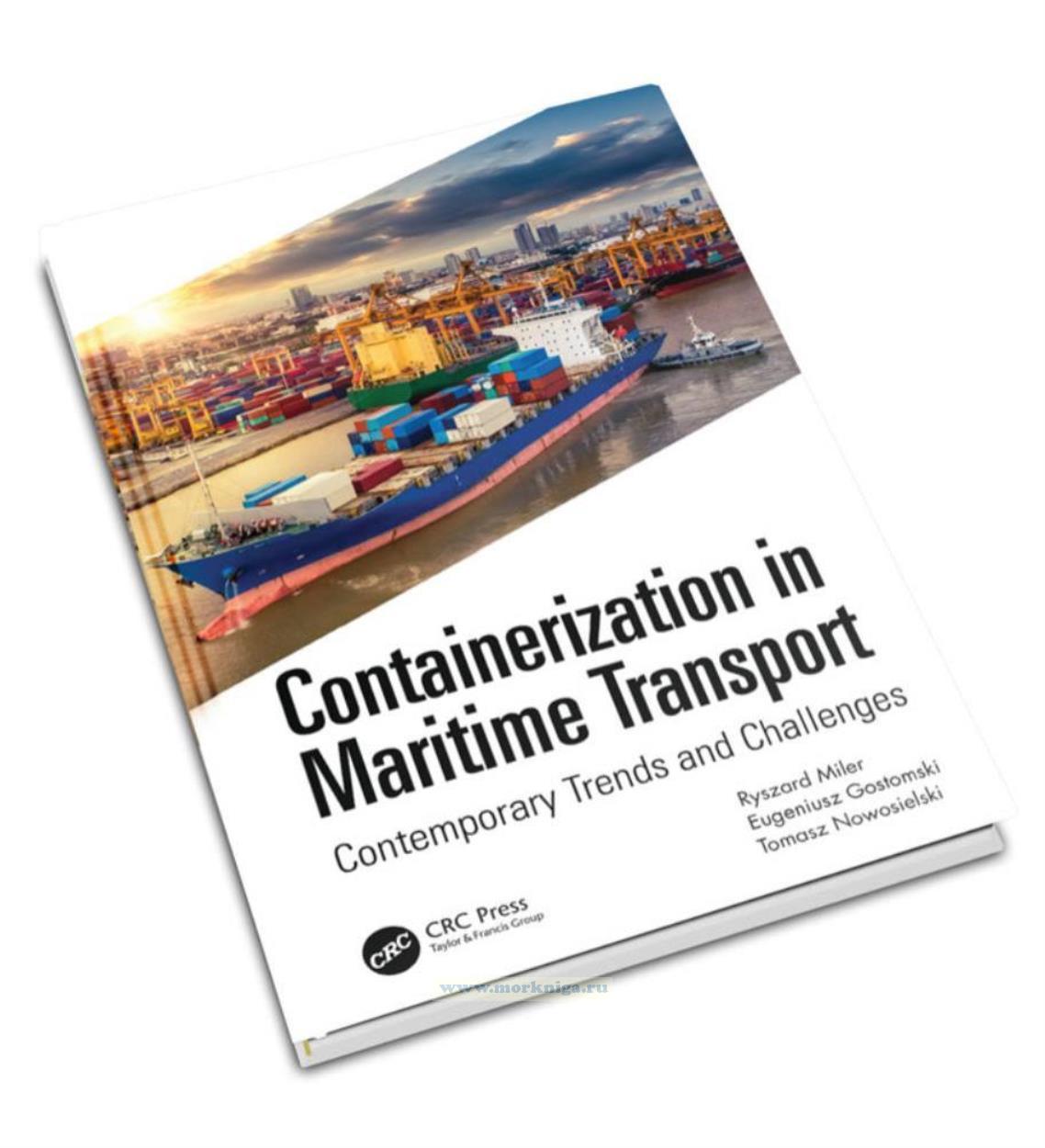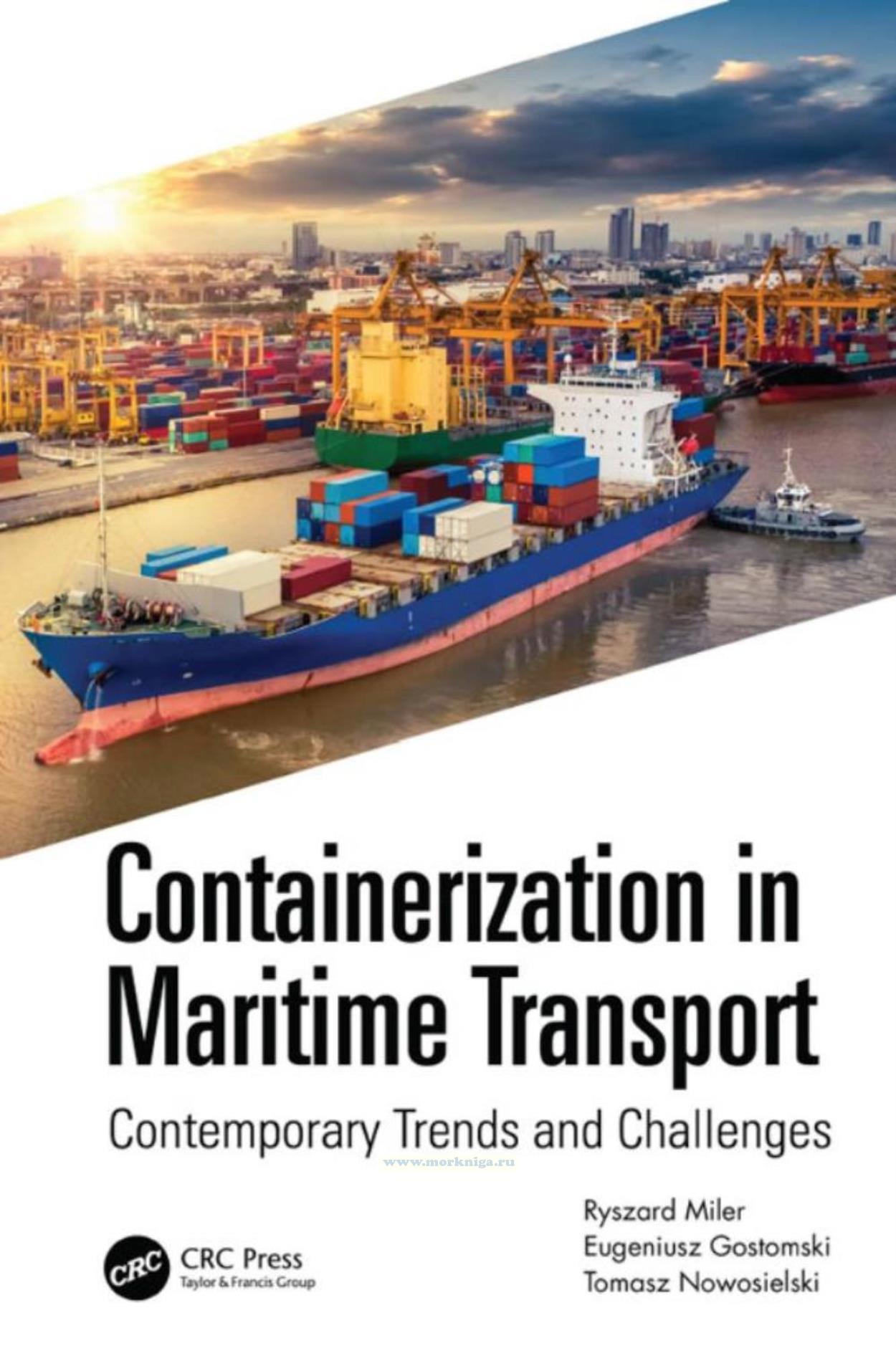Containerization in Maritime Transport. Contemporary Trends and Challenges/–Ъ–Њ–љ—В–µ–є–љ–µ—А–Є–Ј–∞—Ж–Є—П –≤ –Љ–Њ—А—Б–Ї–Є—Е –њ–µ—А–µ–≤–Њ–Ј–Ї–∞—Е. –°–Њ–≤—А–µ–Љ–µ–љ–љ—Л–µ —В–µ–љ–і–µ–љ—Ж–Є–Є –Є –њ—А–Њ–±–ї–µ–Љ—Л
–Ъ–љ–Є–≥–∞ –љ–∞ –∞–љ–≥–ї–Є–є—Б–Ї–Њ–Љ —П–Ј—Л–Ї–µ
Containerization provides optimization of handling processes in terms of intermodality and efficient cargo handling, and maritime transport, in particular, it provides further optimization of shipping processes in terms of volume and distance. Containerization has become the most significant factor stimulating the development of modern global trade. With the progress of globalization taken into account (longer distances and increasing cargo volumes), it can be seen that cargo becomes predestined to be transported by sea, which encourages ship owners to enlarge their fleets of container ships. Containerization in Maritime Transport: Contemporary Trends and Challenges addresses the key challenges to maritime transport and containerization, beginning with economic and managerial factors, through organizational, technical, operational, information and IT challenges, and ending with ecological challenges-ideally to lessen the environmental impacts of maritime transport.
Contents
About the Authors
Acknowledgments
Glossary of Terms and Abbreviations (Acronyms)
Introduction
Part 1 Maritime Containerized Transport (the Status Quo of Its Structure and Main Processes)
Chapter 1 The Origins of Containerization Processes in International Trade
1.1 Pre-container Loading Units in Transport and the Arrival of a Container
1.2 Implications Caused by the Implementation of Containers to the WorldвАЩs Economy
1.3 Determinants of the Development of Containerization in the World with the Particular Consideration of Maritime Transport
Chapter 2 A Container as a Loading Unit
2.1 The Definition and Principles of Container Standardization (Type Series)
2.2 The Construction of Containers
2.3 Types of Containers (Taxonomy of Containers)
Chapter 3 Container Transport System and Multimodal Transport Systems
3.1 The Container Transport System
3.2 Modal Systems of Container Transport
3.3 Multimodal (Intermodal) Container Transport Systems
Multimodal Transport
Intermodal Transport
Combined Transport
3.4 Systemic Legal Regulations in Domestic and International Container Turnover
3.4.1 International Convention for Safe Containers (CSC)
3.4.2 Legal Regulations for Transporting Hazardous Cargo in Containers with Particular Consideration of the International Maritime Dangerous Goods Code (IMDG)
Chapter 4 The Development of the Global Fleet of Container Vessels
4.1 Types of Container Vessels
4.2 The Size and Structure of the Global Fleet of Container Vessels
4.3 The Impact of the Covid-19 Pandemic and a War in Ukraine on the Global Fleet of Container Vessels and the Prospects for Further Operation of the Fleet
4.4 The WorldвАЩs Largest Container Operators in Maritime Transport
4.5 The Characteristics of the Selected Container Shipowners
A.P. Moller-Maersk Mediterranean Shipping Company (MSC)
COSCO Shipping Lines Co
CMA CGM Hapag-Lloyd
Ocean Network Express One
Evergreen Marine Corporation (EMC)
4.6 The Assets, Capital, Revenues and Costs of the Selected Container Shipowner-Hapag-Lloyd
Chapter 5 The Size and Geographical Structure of International Container Shipping in Maritime Transport
5.1 The Global Stock of Containers Applied in Maritime Transport
5.2 Suitability of Cargo for Containerization in International Trade
5.3 The Volume and Directions of Global Flows in Maritime Container Transport
5.4 The Volume and Geographical Structure of the Global Container Turnover at Seaports
5.5 Empty Containers in International Maritime Trade (Repositioning)
Part 2 Economic Challenges to Maritime Containerized Transport Chapter
6 Transport and Container Handling Costs in International Maritime Transport
6.1 Allocation of Transport and Container Handling Costs to Exporters and Importers
6.2 Port Fees That Are Charged on Maritime Container Operators for the Use of Port Facilities and Container Terminals (the European Approach)
6.3 Fees Charged for Customs Brokerage Services under the Customs Procedures Followed in Containerized Cargo Shipping (the European Approach)
6.4 Freight Rates in Maritime Container Transport
6.5. Fees Charged on Exporters and Importers of Containerized Cargo for Services Provided by Container Terminals (the European Approach)
6.6 Indices in Maritime Container Turnover
Chapter 7 Documents in International Maritime Transport
7.1 A Booking Contract and a Booking List
7.2 A Sea Waybill
7.3 A Liner Bill of Lading
7.4 Direct (Through), Multimodal and FIATA Bills of Lading
7.5 A Slot-Hire Contract
7.6 The Significance of a Bill of Lading in International Settlements with the Use of a Documentary Letter of Credit
7.7 A Cargo Manifest
Chapter 8 Insurance of Containers and Vessels in Maritime Transport
8.1 Circumstances for Insuring Containers, Cargo and Container Vessels
8.2 Hull Insurance
8.3 Civil Liability Insurance Pertaining to the Operation of a Vessel
8.4 Cargo Insurance
Part 3 Managerial and Operational Challenges to Maritime Containerized Transport Chapter
9 The Role of Port Container Terminals in the Maritime Container Turnover
9.1 The Notion of a Container Terminal
9.2 Dry Ports
9.3 Container Depots
9.4 The Characteristics of Maritime Container Terminals
9.5 The Selected Global Operators of Maritime Container Terminals
Chapter 10 Organizational and Technical Conditions Underlying Operation of Port Container Terminals
10.1 Models of the Functioning of Port Container Terminals
10.2 Factors Determining Terminal Operations of Container Handling
10.3 Terminal Infrastructure and Suprastructure
10.4 Services Provided by Port Container Terminals
10.4.1 Stuffing and Stripping Containers in Maritime Trade
10.4.2 Stowing Containers on Board
10.4.3 Access to the Operational System of a Terminal for Cargo Consignees
Chapter 11 Information and IT (Telematics) Solutions in the Management of Containerization Processes in Maritime Transport
11.1 Tasks and Architecture of Telematics Systems in the Management of Containerization Processes
11.2 Monitoring Systems of Container Loading Units in Maritime Transport
11.3 Loading Systems Applied in Maritime Transport of Containerized Cargo (Vessel-Planning Class Systems)
11.4 Terminal Operation Systems Dedicated to Maritime Transport of Containerized Cargo (the TOS-Class)
11.5 Access Systems to a Terminal Operation System Dedicated to Cargo Consigners (Access Systems for Forwarders, a Notification System, OCR)
Part 4 Sustainable Development Challenges to Containerized Maritime Transport
Chapter 12 Ecologistics and Sustainable Development Requirements in the Pragmatics of Containerization Processes in Maritime Transport
12.1 The Origin and Formal and Legal Aspects of Emission Restrictions in Maritime Transport
12.1.1 Maritime Transport as a GHG Emitter-an Imperative for the Implementation of a Methodology for Counting Externalities and External Costs in Maritime Transport (Including Containerized Maritime Transport) in the Light of Challenges Posed to Sustainable Development
12.1.2 Legal Acts and Legislation and Operational Factors (MARPOL, SOLAS, BWM, Energy Efficiency Design Index (EEDI), Ship Energy Efficiency Management Plan (SEEMP)
12.1.3 Components of GHG/CO2 Emission and CO2 Equivalent in Maritime Transport (Identification of Factors)
12.2 Standards, Control and Verification of Emission Generated by Maritime Transport (MRV CO2/CO2E)
12.2.1 MRV CO2-Identifcation of the Procedures, Carbon Intensity Indicator (CII, EEXI, EEDI)
12.2.2 Organizational, Technical and Operational Factors Determining Lower Emission Generated by Maritime Transport
12.3 Standards, Control and Verification of Emissions Generated by Maritime Container Terminals
12.3.1 Carbon Footprint-Identification of Procedures at the Level of a Maritime Container Terminal
12.3.2 Organizational, Technical and Operational Factors Determining Lower Emission Generated in the Operational Field of a Maritime Container Terminal (Scope 1 and 2-Scope 3 Ultimately)
12.3.3 A Maritime Container Terminal as an Element of a Low-/Zero-Emission Sea-and Logistic Chain
Chapter 13 Conclusions
Appendix
References
Index

